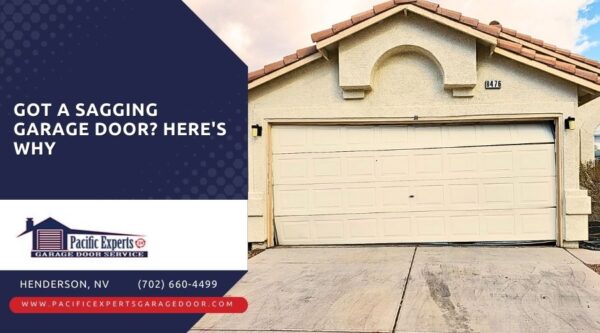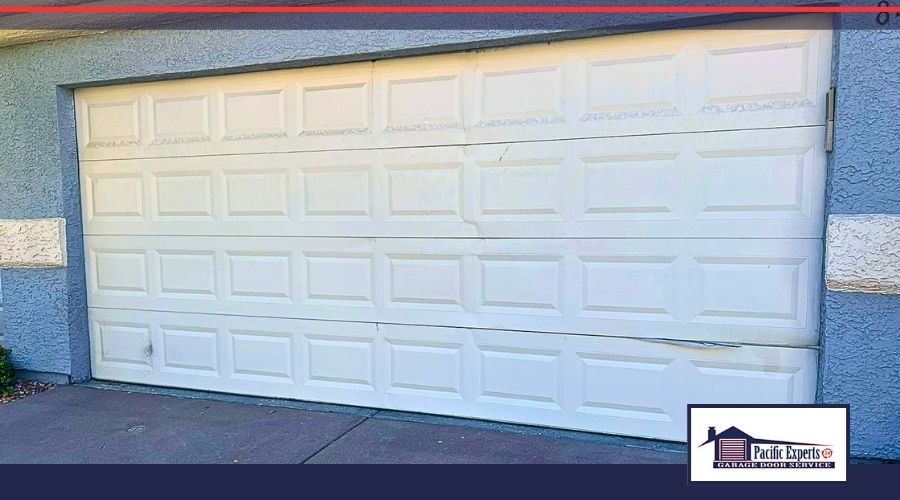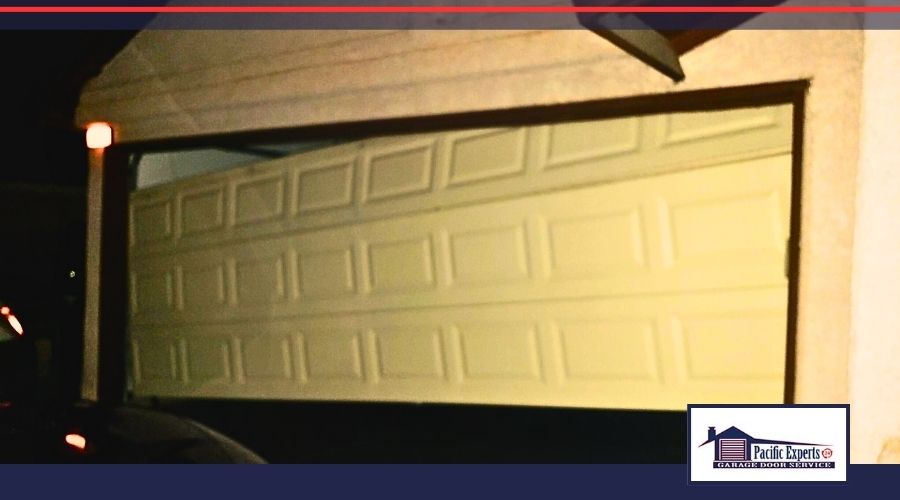Garage doors play a crucial role in every home, ensuring security and convenience for homeowners. Nonetheless, as time passes, these substantial doors might begin to experience sagging, necessitating sagging garage door repair to tackle the array of problems that can arise. This situation can lead to a combination of exasperation and potential hazards. This article delves into the causes underlying a garage door's sagging and presents viable remedies to effectively resolve the issue.
Understanding Garage Door Mechanics
Before diving into the reasons for sagging garage doors, it's essential to have a basic understanding of how these doors function. Garage doors are typically operated by a complex system of springs, cables, and tracks, allowing them to open and close smoothly.
- How Garage Doors Operate: Garage doors operate using either extension springs or torsion springs, which counterbalance the weight of the door, making it easier to open and close. When the door is closed, the springs store tension energy. When you open the door, that tension is released, assisting in the process.
- Common Types of Garage Doors: There are several types of garage doors available, including sectional, roller, and swing-up doors. Each type has its unique mechanism, but they all work with the same principles.
Signs of a Sagging Garage Door
Identifying a sagging garage door early on is crucial to avoid potential risks and costly repairs. Here are some common signs that indicate your garage door might be sagging:
- Uneven Movement: When your garage door operates, it should move smoothly and evenly along its tracks. If you notice the door jerking or tilting to one side, it's a clear indication of sagging.
- Excessive Noise: A well-maintained garage door should not produce excessive grinding, scraping, or squeaking noises during operation. Unusual sounds might suggest misalignment due to sagging.
- Difficulty in Opening or Closing: If you find it increasingly difficult to open or close your garage door, it could be a result of the door sagging, causing resistance in its movement.
Causes of Sagging Garage Doors
Understanding the reasons behind a sagging garage door can help you take appropriate measures to prevent or repair the issue. Several factors contribute to this problem:
- Wear and Tear: Garage doors endure daily wear and tear from frequent use. Over time, this can lead to weakened components, such as springs, cables, and hinges, causing the door to sag.
- Lack of Maintenance: Many homeowners overlook garage door maintenance, which can exacerbate existing issues and lead to sagging. Regular lubrication and inspections are essential to keep the door functioning optimally.
- Poor Installation: In some cases, garage doors may sag due to improper installation. If the components are not aligned correctly during installation, the door's balance can be compromised.
- Environmental Factors: Extreme weather conditions, such as fluctuating temperatures and high humidity, can affect the structural integrity of a garage door over time, contributing to sagging.
Potential Risks of a Sagging Garage Door
A sagging garage door poses several risks that should not be ignored. Addressing the problem promptly can help prevent:
- Safety Hazards: A sagging garage door can become unstable, increasing the risk of it suddenly falling or closing unexpectedly. This poses a serious safety threat, especially if there are children or pets around.
- Security Concerns: A sagging garage door with misaligned tracks or loose components can be vulnerable to break-ins, compromising the security of your home and belongings.
- Structural Damage: If left unaddressed, a sagging garage door can cause additional damage to the door itself, the tracks, and the surrounding structure.
How to Fix a Sagging Garage Door
Dealing with a sagging garage door is not a daunting task, and several solutions can restore its proper functionality:
- Inspection and Diagnosis: Begin by thoroughly inspecting the garage door, identifying the areas of sagging, and assessing any visible damage.
- Replacing Worn-out Parts: Replace any worn-out or damaged components, such as springs, cables, or rollers, to restore the door's balance.
- Balancing the Door: Adjust the tension in the springs to ensure the garage door is balanced and moves smoothly along its tracks.
- Professional Repair Services: For complex or extensive sagging issues, it's best to seek professional garage door repair services to ensure safe and effective solutions.
Preventive Measures for Garage Door Maintenance
To avoid future sagging issues and extend the lifespan of your garage door, consider implementing the following maintenance practices:
- Regular Lubrication: Regularly lubricate all moving parts of the garage door, including springs, rollers, hinges, and tracks, to reduce friction and prevent premature wear.
- Tightening Hardware: Periodically check and tighten all the hardware, including screws, bolts, and brackets, to keep the components properly secured.
- Keeping Tracks Clean: Clean the garage door tracks regularly to remove dirt, debris, and other obstructions that could affect its smooth movement.
- Maintaining Weather Seals: Inspect and replace weather seals when necessary to keep out moisture and debris, preventing potential damage.
Upgrading to a New Garage Door
If your current garage door has significant structural issues or is nearing the end of its lifespan, it might be beneficial to consider upgrading to a new one.
- Benefits of a New Garage Door: A new garage door offers improved safety features, enhanced security, and better insulation, contributing to energy efficiency.
- Choosing the Right Garage Door: When selecting a new garage door, consider factors such as material, design, and insulation options to suit your needs and preferences.
- Professional Installation: Ensure the new garage door is installed by professionals to guarantee proper alignment and functionality.
Pacific Experts Can Fix Your Sagging Garage Door
A sagging garage door is a common issue that homeowners may face, but it's crucial to address it promptly to avoid potential risks and costly repairs. Regular maintenance and timely inspections can help identify and prevent sagging, ensuring your garage door operates smoothly and securely.
Is your garage door starting to sag and become difficult to operate? Don't worry! The Pacific Experts in Henderson, NV are here to help. We specialize in repairing and fixing sagging garage doors, ensuring they function smoothly and efficiently.
A sagging garage door not only looks unsightly but can also pose safety risks and cause further damage to the door and its components. That's why it's crucial to address the issue promptly.
At Pacific Experts, we have a team of highly skilled garage door technicians who are experienced in dealing with all types of garage door problems. Whether it's a faulty spring, misaligned tracks, or worn-out hinges, we have the expertise to diagnose and resolve the issue effectively.
Frequently Asked Questions
How much does it cost to fix a sagging garage door?
The cost of fixing a sagging garage door can vary depending on the extent of the damage and the required repairs. Minor adjustments might be relatively inexpensive, while significant structural issues could involve higher costs. It's best to get a professional assessment and quote for an accurate estimate.
Can I fix a sagging garage door myself?
Minor adjustments and maintenance tasks can be done by homeowners with some experience in handling garage doors. However, for complex sagging issues or if you're unsure about the repairs, it's safer and more effective to hire a professional garage door repair service.
What is the average lifespan of a garage door?
The average lifespan of a garage door can range from 15 to 30 years, depending on the material, quality, and level of maintenance. Regular maintenance can significantly extend the door's lifespan.
How often should I perform maintenance on my garage door?
It's recommended to perform basic maintenance tasks, such as lubrication and hardware checks, at least every six months. However, if you notice any issues or signs of sagging, address them immediately.






